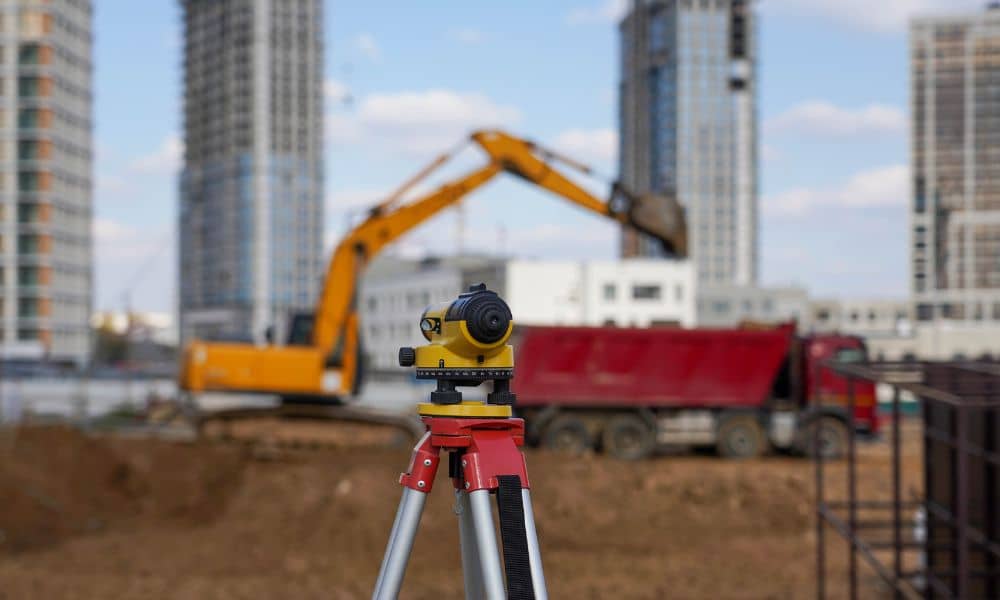
When news broke that the Chicago Bears’ stadium project in Arlington Heights hit another delay, everyone talked about politics, money, and the big “what now.” Lawmakers in Springfield called it a “bye week” for negotiations, leaving the huge redevelopment site waiting for progress. But while the spotlight fades, quiet work still happens behind the scenes — work that decides whether the project will be ready to go when funding finally moves again. That behind-the-scenes hero is the ALTA Title Survey.
If you’ve ever wondered how developers keep large sites “shovel-ready” during standstills, this survey is how they do it. It may sound technical, but it’s one of the most important tools keeping projects alive.
The Pause Doesn’t Mean Stop
When a project this big pauses, hundreds of people still have work to do. Engineers keep adjusting designs, lenders continue checking risks, and city offices still review plans. The only way they can do that is if everyone works from the same, up-to-date map — one that shows exactly where every boundary, easement, and utility sits today, not last year.
That’s what the ALTA Title Survey provides. It combines legal data from title records with precise on-site measurements to give a full, current picture of the property. It’s not just a map — it’s the master record that supports every design, permit, and loan tied to the site.
For a project like the Bears’ 326-acre redevelopment, even one change in right-of-way or utility placement can ripple through dozens of plans. Keeping the survey current helps the team avoid costly surprises when the project restarts.
The Living Map of a Mega-Project
Most people think a survey happens only once before construction. In reality, big developments go through several updates — sometimes every few months. Each time the title commitment changes or a new legal document is recorded, the survey must be updated too.
That’s because large projects are always evolving. Roads shift, access points get moved, and new utility routes are added. Even a small change can affect boundaries or easements. An outdated survey can cause real problems — rejected permits, delayed closings, or new title exceptions that cost thousands to fix.
Surveyors don’t just draw lines and leave. They manage a “living” file that tracks every update between design, engineering, and title review. When the Bears’ project finally resumes, an up-to-date ALTA Title Survey ensures everyone can pick up right where they left off.
Why Survey Freshness Matters
City agencies and lenders care about dates. A survey certified six months ago might already be too old, especially in fast-growing areas. Chicago and nearby suburbs often require current ALTA surveys when developers renew or submit permits. Lenders do the same for financing and insurance reviews.
Why? Because the land itself can change quickly. A new easement might be recorded. A temporary access road might alter traffic flow. Even small grading changes can affect flood data. Without an updated survey, those changes can go unnoticed — until something fails inspection.
By keeping the survey fresh, developers show the city, investors, and lenders that the project is still ready for construction. It’s not just paperwork — it’s proof that the site is safe, clear, and ready to build.
Behind Every Delay, Quiet Progress
The Arlington Heights stadium isn’t the only project facing a pause. Across Illinois, major developments often slow down because of funding, zoning, or environmental reviews. But while the public sees a standstill, professionals know the groundwork continues.
Surveyors are often the first to return once designs change. They check boundaries, update parcel lines, and confirm rights-of-way before new plans go to the city. They also coordinate with engineers who depend on that same data for grading, drainage, and site access.
A current ALTA Title Survey also protects lenders. It confirms that all boundaries, easements, and improvements are still correct. This keeps title insurance valid and avoids expensive re-checks when construction resumes.
In short, the survey keeps momentum alive even when everything else slows down.
The Coordination No One Sees

Keeping a site “shovel-ready” takes teamwork. Surveyors, title officers, attorneys, and city reviewers must all rely on the same data. That’s why accuracy and communication matter so much.
For a redevelopment like the Bears’ site, that means:
- Right-of-way coordination for future roads or transit lines.
- Utility mapping so designers don’t build over buried lines.
- Floodplain checks for insurance and safety.
- Updated parcel descriptions whenever land is combined or split.
Every piece of this connects back to one central file — the ALTA Title Survey. When done right, it prevents conflicts later, like two teams working from different versions of the site plan.
This kind of quiet coordination rarely makes the news, but it’s what keeps projects from falling apart when politics or funding shift.
Lessons for Developers and Property Owners
The Arlington Heights “bye week” is a good reminder for everyone involved in property development: don’t let your ALTA Title Survey expire just because your project slows down.
Re-certifying the survey may feel like an extra task, but it keeps your investment protected. If zoning laws change or a new easement is added, you’ll already have a current document ready for your next approval step.
Even smaller projects — like a warehouse addition or retail center — benefit from regular updates. A current ALTA survey keeps financing, permits, and title insurance smooth. And when the market reopens, you won’t waste months starting over.
The Real Meaning of “Shovel-Ready”
Developers love saying a project is “shovel-ready.” It means construction can start as soon as funding arrives. But real readiness isn’t about excitement — it’s about preparation.
Being shovel-ready means having valid permits, clean zoning, and an accurate ALTA survey. If any of these fall behind, the project stalls longer than anyone expects.
That’s why surveyors keep working even during delays. They’re confirming data, checking for changes, and preparing everything needed for that first scoop of dirt.
The Quiet Hero of Progress
Politics may delay a stadium, but preparation never stops. While talks in Springfield move slowly, surveyors keep the blueprint of the land alive — mapping boundaries, confirming details, and making sure no surprises await when work begins again.
The next time you pass an empty field and wonder why nothing’s happening, remember this: progress doesn’t always make noise. Sometimes, it’s a survey team in safety vests quietly keeping the project ready for kickoff.
In a city built on accuracy and persistence, the ALTA Title Survey truly is the unsung hero keeping biggest dreams shovel-ready.